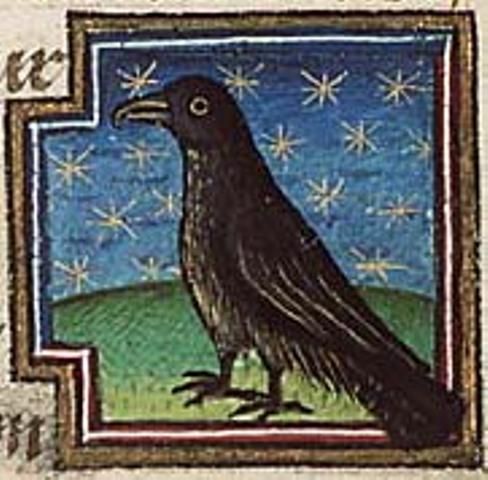















”engus mac ind-”g
AKA Angus mac Og; the Macc Oc
"Chosen-One the Young Son" or "Son of Youth"
Comparable to the Welsh Mabon ap Modron
”engus, sometimes only called "Mac Og," is the Irish god of love, son of the Dagda and Boann. Eternally youthful, he rules at Newgrange, also called Brķgh na Bůinne for its situation on the Boyne River (named for his mother, or the other way around). He is a god of the otherworld, foster-father of Diarmud and accidental instigater of Etain's problems when he fell in love with Caer, a woman in the form of a swan.
Texts
Tochmarc …taine--Yellow Book of Lecan version
”engus was concieved when the Dagda fell in love with Eithne, also called Boann, the goddess of the Boyne and wife of Elcmar of the Brug. The Dagda sent Elcmar on an errand to Bres, and in the meantime used his magic to make one day last nine months. At the end of this time, ”engus was born. The Dagda then brought ”engus to Midir to be raised as a fosterson for nine years. As a child, he is insulted by a Fir Bolg boy he's playing with for not having any parents; ”engus inquires to Midir how this is, and learns that he is the Dagda's son1. ”engus demands a home, and the Dagda helps him trick Elcmar out of the Brug, who is then given Cleitech instead.
In gratitude to his fosterfather, ”engus goes to find Midir the fairest woman in Ireland, who is Etain. After Midir's wife Fuamnach turns Etain into a purple [butter?]fly, ”engus finds her and comforts her at the Brugh, until Fuamnach comes and blows Etain to Ulster.
De GabŠil in t-SŪda, a foretale of Tochmarc …taine--Leinster version
”engus won the Brugh in a bet with his father the Dagda, but that ”engus had to relent and allow his father to live there some part of the year.
Aisling ”enguso
”engus dreams of a young girl for a year, but is unable to find out who she is and falls into a wasting sickness. His mother Boann goes in search and doesn't find her; the Dagda has Bodb go and find the girl, who is found at Loch Bel Dracon, chained to fifty other girls, all of which change shape into birds2. The Dagda asks for Ailill and Medb's help, but is told to meet with Ethal, the local sidhe king and father of the girl, who is called CŠer Ibormeith. Eventually, ”engus is able to meet with the girl on Samhain; she only agrees to be with him if she's allowed to return to the lake. They turn into birds and sing the people to sleep, and Caer remained with Oengus after this.
The Pursuit of Diarmuid and Grainne
”engus acts as foster-father to Diamuid, and tries to hid the lovers from the wrath of Fionn.
Forbhais Droma Damhghaire
”engus appears to Cormac mac Airt and warns him not to conduct a raid on Munster in Forbhais Droma Damhghaire.
Comparison with Mabon ap Modron
It is believed that he is comparable to Mabon ap Modron, Welsh god of youth and healing; this is based not only on name, but might be infered as the Winter Solstice occurances at Newgrange, and Mabon is called "Apollo Maponos" in Gaul. If Mabon is associated with the Greco-Roman sun god, it isn't surprising then that ”engus might become associated with a sun-centered monument built long before Celtic culture came to Ireland.
As such, ”engus, like Mabon, is a fore-runner of other youthful heros like Cuchulainn, Finn mac Cumhail, and Lugh Lamhada, just as Mabon is a fore-runner of Pryderi, Peredur/Perceval, Lancelot and Gawain. As Mabon and Oengus are the same, one can look at the remains of their stories, compare them with recurring themes in the stories of the heros listed above, and be able to come up with a saga of an early god of youth, usually identified with the Gaulish Maponos, who later developed into the Grail knight, while his father/uncle became the Fisher King.
NOTES
1. This is similar to the story of Merlin/Emrys.
2. This is similar to the story of is told of Dechtire, the mother of Cu Chulainn.
SOURCES
"The Dream of Oengus". Early Irish Sagas. trans. Jeffrey Gantz. Penguine.
"The Taking of The Brķgh" The Celtic Heroic Age. ed. by John T. Koch, John Carey. David Brown Book Company, 2003.
Forbhais Droma Damhghaire.
Cath Magh Tuiredh. trans. Elizabeth A. Gray. Irish Texts Society, 1982.

Back to "O" | Back to JCE
Home
Mary Jones © 2003